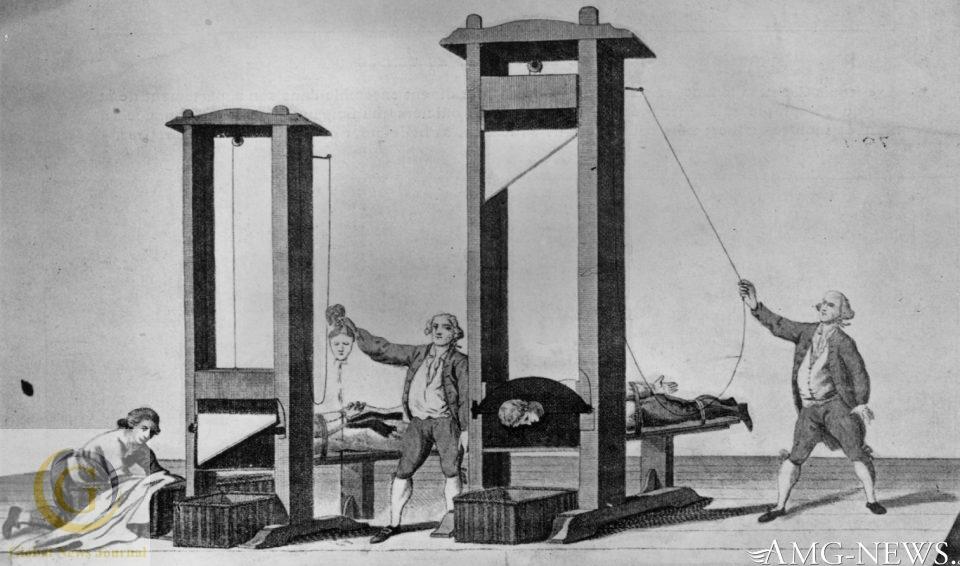California PG&E’s Election Day Power Outages Cast Dark Cloud on Democracy: Over 7,000 Polling Places at Risk Amid Alarming Security Threats
Ready to uncover the truth? Sick of the lies? Join our Telegram Channel now. It’s time for the real story! My gratitude to all my readers!
California PG&E’s Election Day power outages could disrupt over 7,000 polling sites in 17 counties amid escalating threats to the power grid, raising concerns for election security and public safety.
California’s biggest utility company, PG&E, has ignited a political firestorm by planning “Public Safety Power Shutoffs” on Election Day, affecting 17 counties and more than 7,000 polling locations. Citing high winds and fire risk, PG&E claims these outages are essential for public safety. But many are questioning the timing. With recent claims of a military-style attack on a PG&E substation and fears of EMP attacks looming, the shutoffs appear as more than a coincidence, raising questions about election security, national threats, and the unseen risks lurking in California’s power grid.
Unpacking the “Public Safety” Power Outages: A Concerning Move
PG&E has announced that high winds could force them to initiate sweeping power outages across California on Election Day—a pivotal moment for democracy. While the utility giant frames this as a precaution to prevent wildfires, the timing and scope are sparking suspicion. Seventeen counties across the state, including high-population areas like Alameda, Santa Clara, and Sonoma, are poised to experience disruptions that could directly impact the voting process. With over 7,000 polling sites potentially affected, voters, officials, and activists are sounding the alarm.
California residents are familiar with PG&E’s Public Safety Power Shutoffs (PSPS), but the timing of this particular event has raised concerns. Election Day, after all, is hardly the time to shut down critical infrastructure. PG&E claims it has “taken proactive measures” to ensure power is available at polling places. But can they guarantee this, and why take the risk in the first place?
High Winds, High Stakes: The Excuse for Election Day Power Outages
PG&E attributes these planned outages to high winds and dry conditions, which increase the risk of power lines sparking wildfires. This reasoning has become common practice in California, but skeptics are questioning the need for such drastic action on one of the nation’s most crucial days. Winds are a predictable factor in California’s climate, and many wonder why a power company serving millions hasn’t found safer, more reliable alternatives.
With climate change driving more extreme weather patterns, PG&E faces the delicate task of balancing public safety against public access to fundamental services—like voting. Their claim of “high winds” as an excuse on Election Day is being met with growing skepticism. Some are beginning to suspect that these shutoffs could be weaponized, even manipulated, to sway or discourage voters. In today’s highly charged political environment, every detail counts, and this one is hard to ignore.
Counties in the Dark: Mapping Out the Affected Regions
The impact of these outages extends far and wide, affecting communities from Northern to Southern California. Key areas on PG&E’s outage list include:
- Alameda
- Butte
- Colusa
- Contra Costa
- Glenn
- Kern
- Lake
- Mendocino
- Napa
- Plumas
- Santa Clara
- Santa Cruz
- Solano
- Sonoma
- Stanislaus
- Tehama
- Yolo
These counties are diverse, home to urban centers, agricultural hubs, and rural areas. Together, they represent a cross-section of the Californian electorate, heightening the stakes. Each affected county harbors critical polling places, and the disruption of power in any of these locations could delay voting, reduce turnout, or sow chaos on Election Day.
Election Day or Sabotage Day? PG&E’s Timing Raises Red Flags
Why now? Why Election Day? PG&E’s decision to proceed with planned outages has raised eyebrows, with critics pointing out the potential for serious disruption. A power outage in a polling place, even for a few hours, could impact hundreds or even thousands of voters. Delays and frustrations could easily discourage people from waiting in long lines, effectively disenfranchising them.
Some observers wonder if this is an orchestrated attempt to manipulate voting patterns. Public safety or not, the timing seems suspect. The move has heightened awareness of what feels like a “controlled blackout,” one with consequences that could alter the course of California’s election outcomes. While PG&E may deny any intent beyond fire safety, the fact remains that these outages threaten democratic participation, opening the door to speculation about hidden motives.
The Tucker Carlson Factor: Connecting the Dots with a PG&E Substation Attack
Adding fuel to the fire is a recent interview by Tucker Carlson, in which he discussed an alleged attack on a PG&E power station by a military special forces unit. The timing of this interview with the announcement of PG&E’s Election Day outages has led some to connect the dots between the two events. Carlson’s segment brought to light an attack on a PG&E substation where intruders, suspected of having military training, strategically disabled equipment. This incident raises chilling questions about the security of California’s power infrastructure and the potential for outside forces to exploit it.
This “coincidence” has conspiracy theorists and cybersecurity experts alike examining whether the planned outages and previous attacks are part of a broader attempt to destabilize the state’s power grid on Election Day. Could these outages be a smokescreen for another potential attack, one timed to interfere with the voting process? While such questions remain speculative, the eerie overlap of these events has struck a nerve, raising serious concerns.
Weaponizing EMP Attacks: An Unseen Threat to the Grid
The possibility of Electromagnetic Pulse (EMP) attacks as a weaponized tool against power infrastructure is no longer a mere theory. Governments around the world, including the United States and Russia, have conducted tests to gauge the potential of EMPs to cripple entire power grids. One notorious test, the United States’ “Starfish Prime” in 1962, saw a high-altitude nuclear detonation over the Pacific Ocean. This test knocked out communications as far away as Hawaii, highlighting the destructive power of EMPs.
The Soviet Union conducted similar tests, some of which decimated power grids across Kazakhstan. These tests showed that detonating an EMP device even 30 kilometers above ground could disrupt or destroy an entire grid. Today, the threat has escalated, with some nations developing “Super EMP” technology capable of targeting infrastructure without a single shot fired.
As PG&E contemplates power shutoffs in California, some experts warn that such tactics may be preparation for or a response to a potential EMP threat. A nationwide EMP attack, however unlikely, would be catastrophic, affecting everything from power to transportation. California, given its tech-centric and densely populated urban regions, would be a prime target.
The Mysterious 2013 Attack on a PG&E Substation: Was It a Warning?
In April 2013, a group of unidentified individuals executed a coordinated attack on a PG&E substation near San Jose, California. The attackers displayed military precision, cutting communication lines through a previously unknown underground tunnel and using sniper fire to damage, but not fully disable, 17 transformers. The attackers knew the layout, knew exactly how to avoid detection, and vanished without leaving a trace.
This assault has remained an enigma, and authorities never identified or apprehended those responsible. Some theorists believe it was a test run or warning—a show of force from an adversary with deep knowledge of America’s energy infrastructure. Speculation abounds that the incident was a North Korean operation, though no concrete evidence ever surfaced.
As Election Day looms, the memory of the 2013 substation attack resurfaces, adding a layer of dread to PG&E’s planned outages. Some Californians wonder if this history is doomed to repeat, with larger implications for the state’s energy security and the safety of its residents.
The Threat of “No Contact” Warfare: EMP and Cyber Attacks
In today’s geopolitical landscape, traditional warfare is becoming obsolete, replaced by covert, “no contact” methods such as EMP attacks and cyber infiltration. In a world where military might can be exerted through the flip of a switch, power grids, including those managed by PG&E, are prime targets. In 2013, North Korea allegedly positioned a satellite in optimal orbit to launch an EMP attack over the United States. Though the attack never happened, the move underscored the vulnerability of American infrastructure to high-tech, low-contact threats.
California, as an economic powerhouse and tech hub, is especially vulnerable. Imagine an EMP strike disabling Silicon Valley, Hollywood, and San Francisco—essentially paralyzing the state. The PG&E outages, while claimed to be for fire prevention, have sparked fears that they could be a dry run for a more sophisticated assault on Election Day or beyond.
Election Security in the Crosshairs: California’s Energy Grid in Crisis
As PG&E prepares to shut off power across California, the question remains: can they guarantee that power will be restored swiftly enough to avoid disruptions on Election Day? And more critically, can they assure Californians that their infrastructure is secure from external threats, both natural and manmade? The line between precaution and provocation is razor-thin, and the stakes couldn’t be higher.
This crisis exposes the fragile nature of California’s energy grid, its susceptibility to wildfires, EMP attacks, and even military-grade assaults. With Election Day casting a bright light on the situation, Californians find themselves questioning not only PG&E’s decisions but also the broader security of the power grid.
Conclusion: A Convergence of Threats on Election Day
PG&E’s Public Safety Power Shutoffs on Election Day could be seen as an extreme but necessary measure, or a glaring vulnerability. Either way, the potential disruption of more than 7,000 polling places calls into question the reliability of California’s voting infrastructure. From military attacks to EMP fears, PG&E’s outages bring attention to the fragility of the energy systems that power democracy itself.
The looming threats—foreign, domestic, and natural—underscore the urgent need for a fortified and resilient power grid, one that doesn’t depend on outages for safety. As Californians brace for the possibility of a dark Election Day, the state faces a critical decision: will it prioritize security and reliability, or will these cycles of crisis continue unchecked?
🚨MAJOR UPDATE: 2024 Election
California PG&E Plans to Conduct ‘Public Safety Power-Outages” in 17 Counties, Starting on Election Day— Potentially Impacting 7,000+ Polling Locations
🔴 What’s Their Excuse?
“High winds” and need to mitigate fire risk
—— PG&E said the earliest… https://t.co/OVY1NK6rjj pic.twitter.com/ZZZ2lLOfPP— MJTruthUltra (@MJTruthUltra) November 4, 2024
Our mission to champion democracy, freedom of speech, and patriotic values relies on the support of dedicated individuals like you. Your contribution is vital in helping us provide insightful analysis, uncover pressing issues, and inspire positive change in our nation.
Join us in our commitment to making a difference. Every donation counts and empowers us to continue our work in advocating for the values we hold dear.
Thank you for being a crucial part of our journey.

I’m a 33-year-old writer and the founder of World Reports Today. Driven by the timeless principles of democracy and freedom of speech, I use my platform and my writing to amplify the voices of those who uphold these ideals and to spark meaningful conversations about the issues that truly matter.





